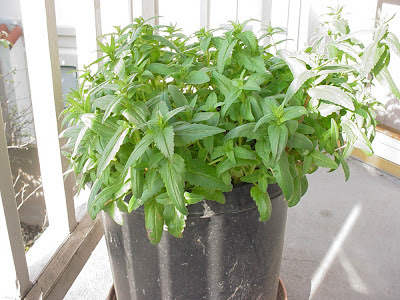We’ve
spent the whole month of May admiring the Chinese Houses blooming in Mother Nature’s
Backyard. It’s been a busy month - getting
ready for the formal opening of our garden in early June. So it’s a relief to finally share this
favorite plant with all of you.
Chinese
Houses (Collinsia heterophylla) is
one of many California native annual wildflowers. It
once grew throughout the California Floristic Province (west of the Sierras).
Locally it still grows in the Santa Monica Mountains and on the Palos Verdes
Peninsula. It once also grew in the
lowland areas of western Los Angeles County, including the coastal prairie areas. It may once have been found near the Dominguez
Slough (Gardena Willows Wetland Preserve), where Mother Nature’s Backyard is
located.
Chinese Houses are somewhat unique among our wildflowers - they like shade. Most native annual wildflowers are sun-lovers. Shade adaptations provide Chinese Houses with a unique niche in nature – and a great opportunity for home gardeners to use native wildflowers in their shady gardens. In nature, Chinese Houses grow on north-facing slopes and in the bright shade of tall trees.
Several
Collinsia species are native to
California. All are annual wildflowers
and all look somewhat similar. The
common name ‘Chinese Houses’ comes from the fact that the flowers, stacked in rows
along the stem, vaguely resemble Chinese
pagodas. At any rate, Chinese Houses bear
some of our loveliest and most exotic-looking native blossoms. If you love purple, this is a wildflower for
you. The flowers are intensely purple
and white, resembling elegant garden snapdragons. See them once and fall in love! We did.
Chinese
Houses are not difficult to grow from seed, which is available from mail-order
native seed sources like the Theodore Payne Foundation (see the Where
to Buy Native Plants page on this blog). Seeds can be planted directly in the ground
(probably the best choice) or started in small, deep pots and planted out
later. We started this year’s Chinese
Houses in tall Styrofoam drinking cups (we re-use and then recycle them). Next year we plan to direct seed. Like many native wildflowers, the seeds are
small. You’ll need to just barely cover them or rake
them in lightly. The seeds need light
to germinate. Cover them too deeply and
they won’t sprout.
Annual
wildflower seeds are best planted in the late fall or early winter, preferably
right before a significant rain storm. The
rain water – and uniformly moist soils – help the seeds to germinate and the
young seedlings to grow. Chinese Houses,
like all wildflowers, need plenty of water until they flower. In El Nino years, the rain may be
adequate. But you’ll need to water your
seedlings when hot winter winds dry out our soils in a hurry. Once your wildflowers are blooming you can taper off the water. Chinese Houses need dry conditions after flowering
to allow them to produce viable seeds.
Give them this and they’ll re-seed beautifully.
Many
gardeners wonder about the proper mulch to use with annual native
wildflowers. The answer is ‘none’ or a 1”
deep layer of gravel, fine crushed rock or decomposed granite. An inorganic mulch helps conserve water and
hides seeds from seed-eating birds. It
also gives your wildflower areas a finished look even in the ‘off’ season. Many seasoned gardeners can attest that wildflowers grow best under an inorganic
mulch – even if that mulch is meant to be a pathway!








